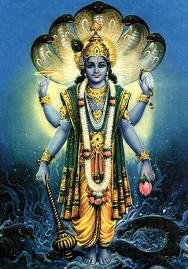 |
Essence Of
Bhavishya Purana
|
| 30 Prophecies on Some Highlights of Bharat thereafter | |
It was at that very time that Sevajaya (Chhatrapati Shivaji) a grand warrior subdued several small royalties and created Maharashtra; he also brought Aourangajeb under control and installed his son as the Mughal King. He extended his might in the Southern parts of Bharat. One valiant Mlecchha warrior called ‘Phalaroosh’ destroyed the once renowned Mughal Empire into pieces and ruled for ten years and his son Mahamad ruled for twenty years. Meanwhile, it was prophesied that one Nadar Shah Durrani from Khuraj (Iran) visited Bharat and plundered the traditional riches including the famous Peacock throne full of gold and high valued precious stones. Mahamad’s son Mahamatsya was killed by Maharashtrians and the Great Mughal Empire was torn to pieces. In fact there was no binding force of a stature in Bharat and only local Principalities got mushroomed. Be that as it may, Shri Rama of Ramayana after vanquishing Ravana made possible many of dead ‘Vanara’ soldiers who fought valiantly to get back to life, the important ones being Vikata, Vrujil, Jaal, Burleen, Simhal, Jawa (Jaawa), Sumaatra (Sumatra), etc. He gave the boon to these Vanaras that quite a few Dwipas (Islands) far and near Lanka be occupied and that they would be Kings of these Islands and that Architect Jaalandhara would help construct and even their wives would be procured from among those Devakanyas liberated after Ravana’s death. The ‘Vanaras’ were delighted at the happening and in course of time, the habitants of the Islands developed trade contacts with ‘Garunds’ (British) of the Western World, especially with Isha Putras (Khishtha, Ishu or Isamasiha). The inhabitants were Surya Deva worshippers and virtuous and honest people worthy of promoting overseas business and the King of the Western Dwipa of England called ‘Vikata’ and later on by his wife ‘Vikatavati’ or Victoria ruled over there by ‘Ashta Koushala Marg’ (under the Counsel of Parliament). The British Raj witnessed high prosperity by executing overseas business generation after generation with democracy (Rule of Citizens) with the hereditary Queen or King elected by a Prime Minister; the ninth Chief Representative of Gurunds was Mekal (Lord Macaulay) who administered the Raj with honesty for twelve years; he was followed by Laurdel (Lord Wavel) who ruled for thirty two years. Bharat was administered in separate Regions by various Rulers like Nagavamshheyas, Andhra vamsheeyas, Kaushala deshiyas, Saurashtra deshiyas, Naishadha desheeyas, and Gurjara desheeyas. This situation continued till the British Rulers consolidated their grip over Bharat by ‘divide and rule’concept till Swadesha Bharata witnessed innumerable twists and turns and beacame an integral Entity under the banner of ‘Prajapalana’ or Democracy. But meanwhile the inhabitants of Bharat belonging to innumerable sects, religions, languages and cultures have since emerged as a strong Democracy with a typical identity of its own. | |
 Prev:Emergence of Mughal Empire, Akbar the Great and celebrities of the Era Prev:Emergence of Mughal Empire, Akbar the Great and celebrities of the Era | |
 Next:Emergence of Mughal Empire, Akbar the Great and celebrities of the Era
Next:Emergence of Mughal Empire, Akbar the Great and celebrities of the Era